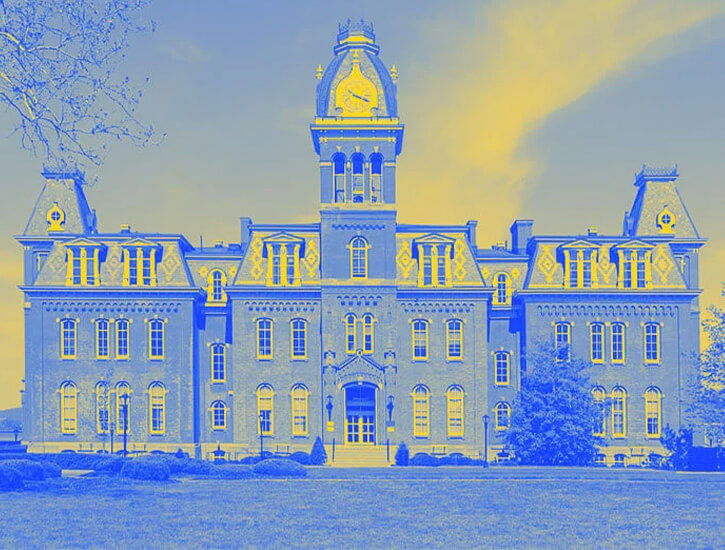
By Akemi Kondo Dalvi, CPA/PFS?, CFP?
Many are confused about where we stand as a country in relation to student debt loan forgiveness. There appear to be a lot of headlines on the subject, but then it is unclear what is actually enacted (versus extended, updated, or over-turned) thereafter.
Taking a look back, the idea of student loan forgiveness originated as a longshot campaign promise by Sen. Elizabeth Warren running in the Democratic primary for president in 2019. At that time, Warren stated she would use her presidential authority to cancel $50,000 of student loan debt per borrower, if elected.
Around the same time, then former Vice President Joe Biden was also running for president in the Democratic primary. According to Politifact, on the campaign trail, Biden promised to “forgive all undergraduate tuition-related federal student debt from two- and four-year public colleges and universities and private HBCUs (historically black colleges and universities) and MSIs (minority-serving institutions) for debt-holders earning up to $125,000.”i
At the time, President Trump was in office. In March 2020, Trump declared a national emergency due to the COVID pandemic. On the same day, Secretary of Education Betsy DeVos set the interest rate on federally held loans to 0% and suspended required payments on student debt for a period of at least 60 days. Later in the same month, Trump signed the CARES Act, which paused student loan payments and interest through September 2020.
Under Trump’s presidency, the Department of Education extended the pause on student loan debt and interest payments from the original September 2020 date through year end. Thereafter, the department extended the pause on student loan repayment through Jan. 31, 2021, under emergency powers granted by the provisions outlined in the HEROES Act of 2003, originally enacted after the 9/11 attacks on America.
In January 2021, Biden was inaugurated as the 46th president of the United States. On his Inauguration Day, he declared that the pause on student loan debt would be extended through Sept. 30, 2021. In March 2021, Biden signed into law the American Rescue Plan pandemic relief bill, which among many other provisions, outlined that student loan forgiveness would not be subject to income tax by the beneficiary through 2025. However, no new student debt had actually been for-given yet. In August of 2021, Biden extended the student loan payment pause again, through January 2022.
Fighting for some forward progress, in October 2021, the Department of Education issued a special temporary waiver that expanded the number of people eligible for loan forgiveness under the Public Service Loan Forgiveness (PSLF) program. Approximately 373,000 people had debt cancelled under the one-time waiver. Before the year was over, Biden extended the student loan payment pause once again, deferring the next deadline to May 2022. In April 2022, Biden extended student loan payment through August 2022.
Finally in August 2022, Biden used executive powers under the HEROES Act of 2003 to forgive student debt, noting hardships were ongoing in 2022 in connection to the COVID-19 emergency. With his authority, the president forgave up to $10,000 of federally held student loan debt per borrower, or up to $20,000 for those who were eligible for a Pell Grant, a subsidy by the U.S. federal government for under-graduate students with exceptional financial need.ii
The program was anticipated to provide $430 billion of debt relief. Biden also announced final extension of student loan repayment through December 2022.
Shortly after the August 2022 announcement, six states (Nebraska, Missouri, Arkansas, Iowa, Kansas and South Carolina) sued the Department of Education, noting Biden’s forgiveness program is not eligible for unilateral executive power under the HEROES Act, under which authority was intended to be temporary only so long as a national emergency was in effect.
During the next month, various other parties sued the Department of Education and Biden. In November 2022, a Texas federal judge ruled against the Department of Education, striking down Biden’s forgiveness program. As such, the Biden Administration has appealed the case to the Supreme Court.
Given the developments, the pause on student debt payments was extended an eighth time to the earlier of 60 days after June 30, 2024, or the Supreme Court ruling. However, the Department of Education noted payments will resume only if the Biden Administration’s federal student loan forgiveness program has been implemented and related litigation has not been resolved.iii
As things stand currently, litigation looks lengthy, and resolution looks distant.
In April 2024, Biden announced a new student forgiveness plan, coined as “Plan B” that attempts to broaden the scope of those eligible for student loan forgiveness to include an estimated 30 million borrowers.
A few highlights of the bill include automatic debt forgiveness for debt holders who have not applied, but are eligible through the Saving on Valuable Education (SAVE) plan and Public Service Loan Forgiveness (PSLF). The new plan also proposes to forgive up to $20,000 of the balance for those with “runaway interest” due to unpaid interest, regardless of their income.
Additionally, borrowers experiencing financial hardship or those enrolled in “low-financial-value programs” would also have their debt cancelled. After May 17, the Department of Education will move forward and begin implementing the relief plan unless it decides to make revisions based on the record number of 34,000+ public comments received to date.
The goal is for the new plan to be in place by fall 2024. However, legal challenges could certainly delay or outright derail implementation.
Even without Plan B, so far, nearly $160 billion in student loan debt related to approximately 4.6 million borrowers has been forgiven under existing loan forgiveness programs such as SAVE, PSLF and Income-Driven Repayment Plans (IDRP). That forgiveness balance is estimated to be around 10% of all federal student loan debt currently outstanding.iv
In summary, this story is still being written and the outcome is uncertain. Biden’s battle for student loan forgiveness ensues and will likely continue to capture headlines in the months ahead.
i. https://www.politifact.com/truth-o-meter/promises/biden-promise-tracker/promise/1595/forgive-student-loan-debt-public-colleges-and-univ/
ii. https://studentaid.gov/understand-aid/types/grants/pell
Source: https://www.investopedia.com/student-debt-timeline-7112128
iii. https://finance.yahoo.com/news/student-loan-pause-ends-june-140447811.html
https://www.newsweek.com/student-loan-debt-cancelled-biden-art-institutes-1895976
The opinions expressed above are solely those of Kondo Wealth Advisors, Inc. (626-449-7783 info@ kondowealthadvisors.com), a Registered Investment Advisor in the state of California. Neither Kondo Wealth Advisors, Inc. nor its representatives provide legal, tax or accounting advice.
 UnitOne and Miyake Taiko at Armstrong Theatre
UnitOne and Miyake Taiko at Armstrong Theatre
 Raiders vs. Rams 2024 livestream: How to watch NFL for free
Raiders vs. Rams 2024 livestream: How to watch NFL for free
 Today's Hurdle hints and answers for October 22
Today's Hurdle hints and answers for October 22
 Baidu CEO says robotaxi business ‘scale
Baidu CEO says robotaxi business ‘scale
 Makeup Artist Tsuji Wins Oscar for 'Darkest Hour'
Makeup Artist Tsuji Wins Oscar for 'Darkest Hour'
 Two Lovers
Two Lovers
 The New Food Haul
The New Food Haul
 Best Samsung Galaxy deal: Save $300 on Galaxy Z Fold 6
Best Samsung Galaxy deal: Save $300 on Galaxy Z Fold 6
 BetterBabbit и VV возглавили группы на BetBoom Classic: Hearthstone Battleground
BetterBabbit и VV возглавили группы на BetBoom Classic: Hearthstone Battleground
 Baidu CEO says robotaxi business ‘scale
Baidu CEO says robotaxi business ‘scale
 ‘The King and I’ Closes This Weekend
‘The King and I’ Closes This Weekend
 Space junk found in Australia suspected to be from SpaceX
Space junk found in Australia suspected to be from SpaceX
 Toray Pan Pacific Open 2024 livestream: Watch live tennis for free
Toray Pan Pacific Open 2024 livestream: Watch live tennis for free
 NYT mini crossword answers for October 22
NYT mini crossword answers for October 22
 West Covina Cherry Blossom Festival This Saturday
West Covina Cherry Blossom Festival This Saturday
 Top 5 Chinese LGBTQ apps in 2022 · TechNode
Top 5 Chinese LGBTQ apps in 2022 · TechNode
 Capture the Flagship
Capture the Flagship
 Arkadium mini crossword answers for October 21
Arkadium mini crossword answers for October 21
 Studio Ghibli Films in Hollywood, Santa Monica
Studio Ghibli Films in Hollywood, Santa Monica
 What happens when the Thwaites Glacier in Antarctica, the so
What happens when the Thwaites Glacier in Antarctica, the so
Heinz made Ketchup Caviar so Valentine's Day dates can dine like fancy trashEggs are taking over TikTok, thanks to the world record eggA story of an online stalker takes a bizarre turn down the rabbit holeI started baking bread to spend less time on the internet. It backfired.I started baking bread to spend less time on the internet. It backfired.This plank fight between angry neighbors is truly a wild way to start the dayWell, this wild Nextdoor post escalated quicklyDaniel Radcliffe has a Super Bowl favorite and a message for Tom Brady20 TikTok accounts that will fill the void Vine left in your heartFurloughed ranger starts making videos of the parks for the public This startup wants to be the Airbnb of assisted living France is the first country to ban all plastic plates and cups Miley Cyrus and her tongue to save the world by opting out of red carpets Politician challenged on marriage equality on TV by her gay brother All the best reactions to Apple's brand new emoji Paddleboarding enthusiast Orlando Bloom finally made his Instagram public World's biggest brands join forces to improve online ads Bill Murray will be tending bar in Brooklyn this weekend The Chainsmokers bro would like everyone to stop calling him a bro Kim Kardashian imagines a world where Donald Trump and Hilllary Clinton ugly cry together
0.1392s , 9960.0625 kb
Copyright © 2025 Powered by 【early films that eroticize black bodies】RETIREMENT TIPS: Biden’s Student Loan Forgiveness,Global Hot Topic Analysis